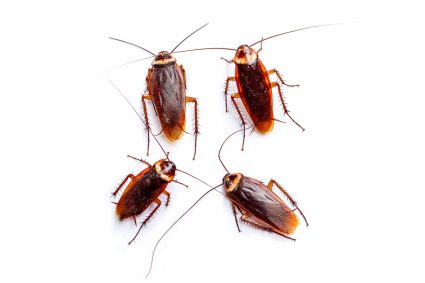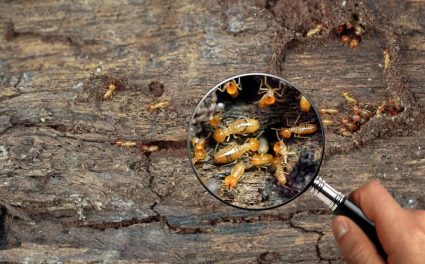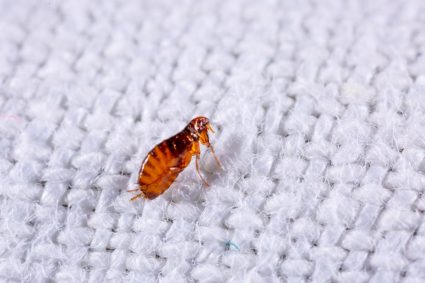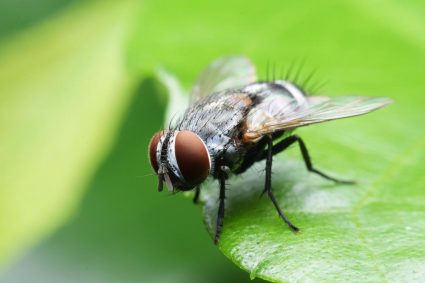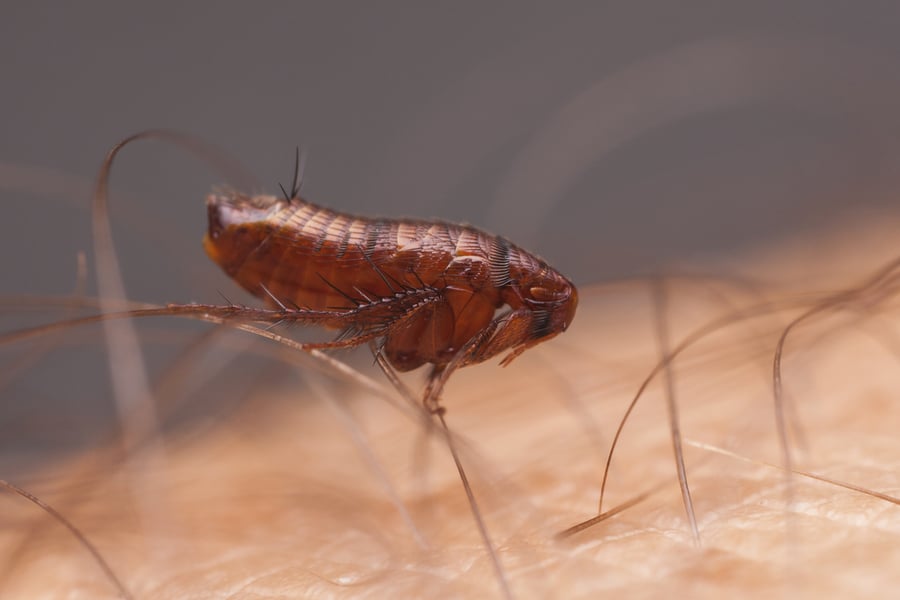
Fleas are small, wingless pests that feed on the blood of their hosts. They are parasites found in mammals, birds, and reptiles.
Fleas have been around for thousands of years, plaguing these animals with itching and irritation caused by their bites.
Flea infestations are one of the most common complaints among pet owners. Unfortunately, fleas can live anywhere, from carpets to upholstered furniture and even on your pet’s skin.
The time it takes for a product to kill depends on its active ingredients and other factors such as age, weight, and activity level of the pet being treated.
Some topical treatments may begin within minutes, while others may take several hours or days before full effectiveness is achieved.
The article will discuss various signs to ensure your flea treatment is working.
Fleas are a nuisance, not only for humans but also for household pets. Unfortunately, infestations of these pests can be difficult to eradicate, leaving many homeowners frustrated and overwhelmed.
There are a few signs you can witness to conclude if your flea infestation is coming to an end.
In addition, noticing the different characteristics of infected animals can help you understand if your pest control efforts have been successful.
Once the infestation has been identified, it’s important to continue with regular treatments even after the initial problem appears to have been resolved.
This article will discuss various signs to gauge if your flea treatment is working. Then there will be a guide about the most effective flea treatments and how to prevent their spread further.
In the end, frequently asked questions about flies will follow a summary.
6 Signs Your Flea Medication Is Working

Fleas can be a problem for both pets and pet owners alike.
Fortunately, treatments can help rid your pet of these filthy insects.
Flea medications come in many forms, each with varying degrees of effectiveness.
Knowing when flea medication works can save you time and money by allowing you to switch treatments if necessary.
Here are six signs that your flea medication is working:
The flea’s life cycle is important to understand if you and your pet are dealing with a flea infestation.
Fleas are parasites that feed off of their host to reproduce, and their life cycle consists of four stages: egg, larvae, pupae, and adult.
During the egg stage, female fleas lay eggs on their host or in their environment, which hatch into larvae over time. Larvae spin cocoons around themselves as they develop into pupae before emerging as adult fleas ready for reproduction.
Adult fleas remain on their original host until it leaves the area, at which point they will search for a new host to feed from and lay eggs on.
1. Presence of Fleas
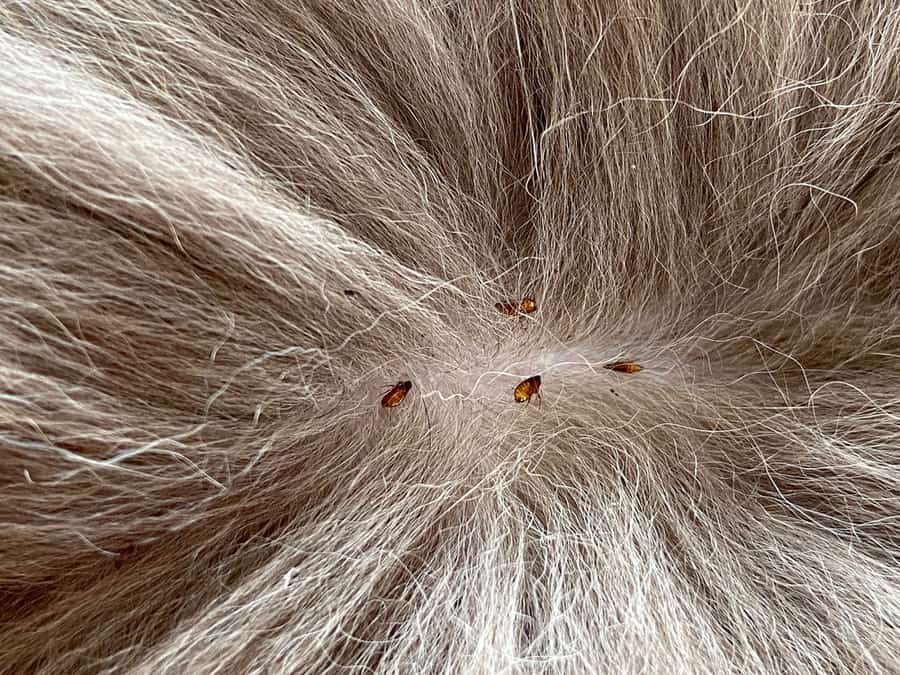
If you’ve noticed fewer fleas and eggs on your pet’s body or around your home, this is a sign that the treatment you used against them may be working.
It’s essential to remain vigilant and continue with the prescribed plan of action, as it could take time for all the fleas in your home to die off completely.
2. No Hair Loss
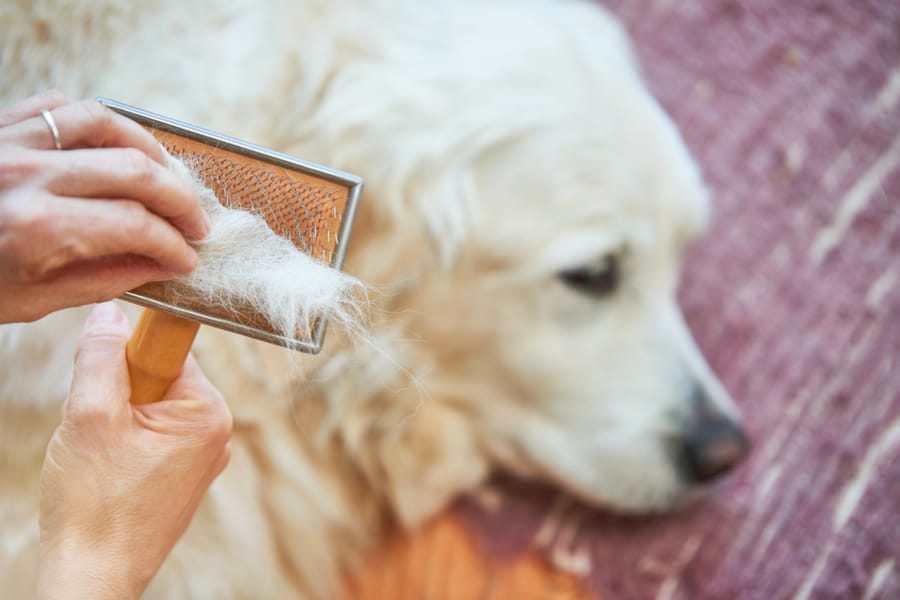
If you suspect your pet has fleas, it’s essential to seek medical attention right away.
Once a veterinarian has prescribed an appropriate anti-flea medication, pay close attention to how well it works.
An easy way to tell if the prescription is having an effect is by looking at your pet’s fur – with the successful treatment.
You should see no further loss of hair or fur from where they were scratching and biting themselves due to the fleas.
It could also mean that the fleas have been eliminated or significantly reduced, thanks to the medication’s effectiveness.
3. No Scratching or Irritation

If you’ve recently treated your pet with a flea-prevention product and you are noticing no more biting or scratching near the base of their tail, chances are that the flea protection has successfully taken effect.
Watch out for dead or alive fleas on your pet’s fur.
This indicates that their treatment has successfully kept them safe from these pests.
4. No New Lumps or Bumps

One of the most prominent signs that your flea medication works is when you notice no new lumps or bumps on your pet’s skin.
Fleas have been known to cause irritation and inflammation on their host’s skin, so if these reactions have vanished, it may be a sign that the flea is dying.
You may find fewer dead fleas around the house or none at all.
5. Vomiting or Lethargy
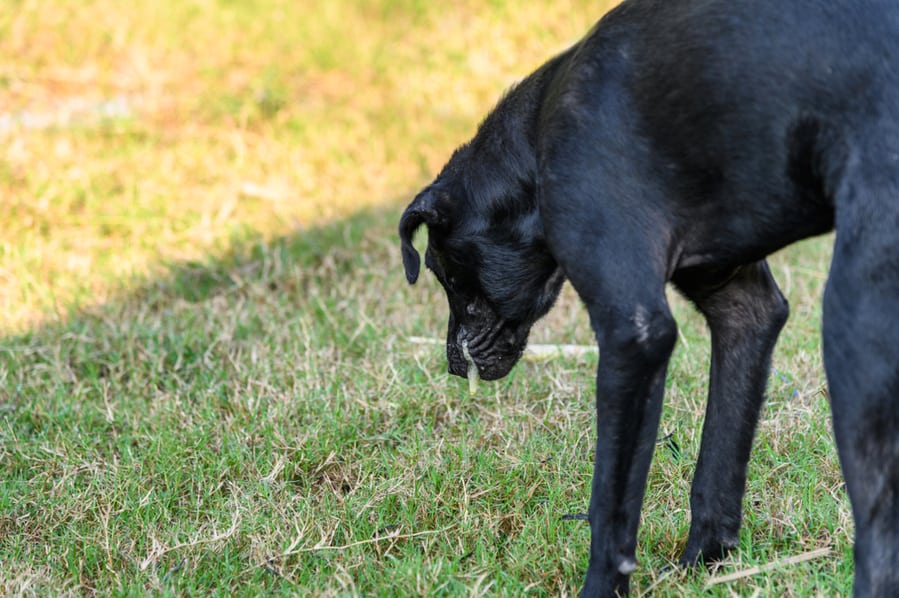
Vomiting: If you notice your pet vomiting shortly after taking the flea medication, this could mean that the medication is killing off the existing fleas, and they’re trying to leave your pet’s body.
Lethargy: Fleas are very active and drain their host of energy from biting and sucking blood.
As soon as your pet takes a dose of flea medicine, the dying fleas will cause less irritation, allowing your pet to rest more efficiently and have more energy throughout the day.
6. Fewer Bites

Another common sign that your flea medication works is fewer bites on your pet or around their fur.
If those behaviors have decreased significantly since administering the medication, the product will likely help combat existing infestations.
Fleas tend to bite repeatedly in a particular area, so if there are more occasional bites, it could be a sign they’re being eliminated from the environment.
6 Effective Treatments To Kill Fleas
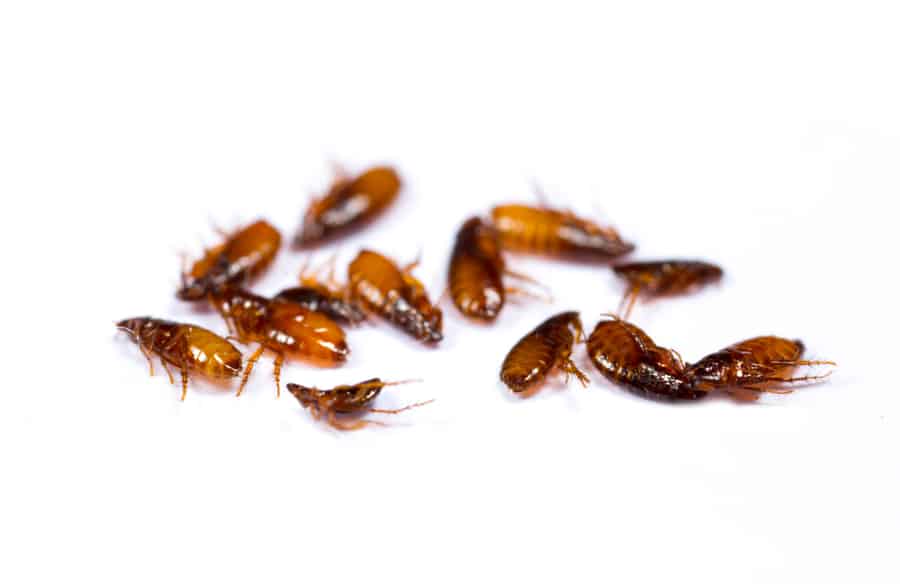
Fleas are an ever-present annoyance to pet owners, and getting rid of them can take time, effort, and money.
The best method for removing fleas is a multi-pronged approach that includes chemical and non-chemical methods.
Chemical treatments such as spot-on products, sprays, shampoos, and oral medications kill adult fleas on contact but may not be effective against larvae or eggs.
To target all stages of the flea life cycle, a non-chemical method such as vacuuming carpets and furniture is recommended in addition to chemical treatment.
Below is a detailed discussion of various treatments to kill fleas:
1. Vacuuming

Vacuuming is an effective way to help rid your home of fleas, as it removes eggs and larvae that may be developing in the carpet or upholstery.
Vacuuming also helps to stimulate fleas out of their hiding places, making them easier to target with insecticides.
First, keep track of how many fleas you find on affected animals after each vacuum session.
If you notice a decrease in the number of adult fleas present over time, your vacuuming efforts are likely helping to reduce their population size.
Additionally, regular washing of bedding and pet carriers will help keep adult populations down.
2. Imidacloprid Treatment

The active ingredient imidacloprid is a potent insecticide used to kill fleas.
Imidacloprid is found in many commercial flea control products and works by interfering with the nerve system of fleas, causing paralysis and eventual death.
It inhibits the transmission of stimuli in the parasite’s nervous system by binding to the nicotinic receptors in the post-synaptic membrane.
This makes it an effective tool for controlling infestations of fleas as it does not require ingestion or direct contact for it to be effective; death occurs through simple contact with the chemical.
Imidacloprid has been extensively tested and proven to be one of the adequate means of exterminating adult fleas and their eggs while providing long-term protection against re-infestation due to its residual activity.
3. Peppermint Oil

Peppermint oil is an essential oil used to treat fleas in household pets.
It has many proven benefits, from promoting relaxation to fighting fungal infections.
Before applying the peppermint oil, check the label to see if it contains insecticide or pesticide ingredients – these are necessary to eliminate existing parasites as quickly as possible.
4. Flea Traps
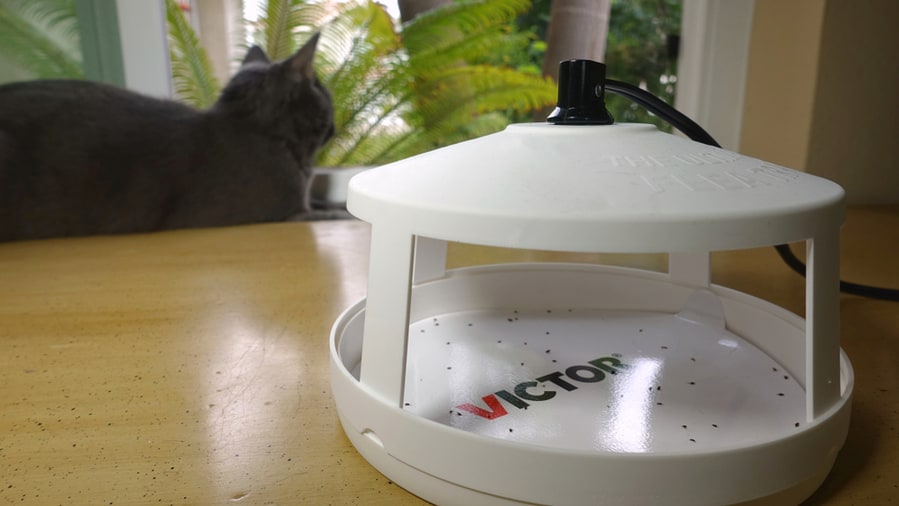
Flea traps that use a light and glue board effectively capture adult flees and monitor treatment progress.
These traps attract fleas with heat and light, trapping them on a sticky surface when they land.
If you notice fewer trapped fleas over time, the treatment is working.
For an effective approach, use these traps alongside other methods, such as insecticides or natural remedies like diatomaceous earth.
It’s important to remember that these traps do not target eggs or larvae, so it may take some time before you can tell if the number of adult fleas has decreased significantly.
5. Flea Shampoo
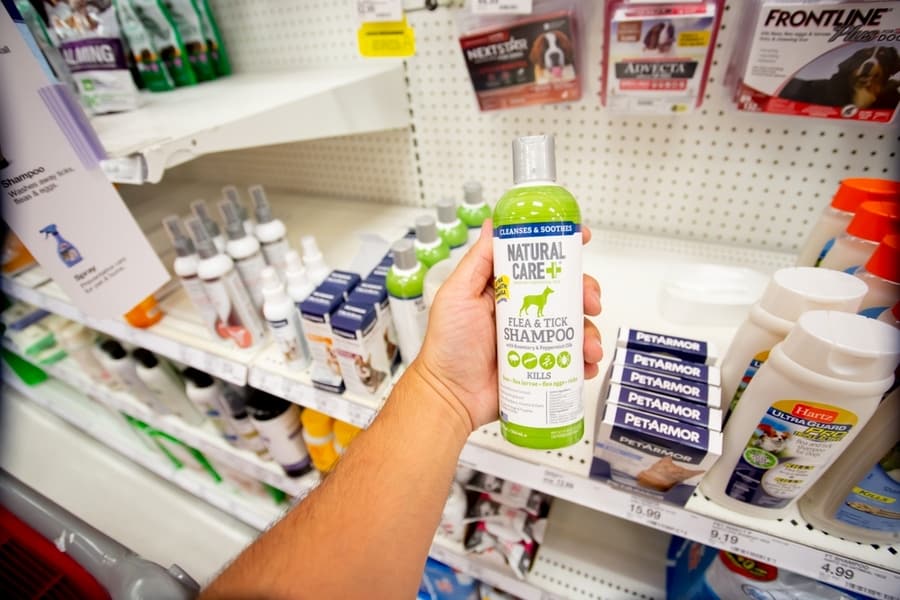
Flea shampoos are popular for pet owners looking to eliminate fleas.
These products can be an effective part of a flea control program, as they work to kill both adult fleas and eggs on your pet’s body.
Additionally, some brands contain ingredients that will help prevent future infestations.
Flea shampoos are effective in treating fleas. When choosing a flea shampoo, you must consider the type of product you’re getting.
For example, certain shampoos are designed specifically for puppies or cats, while others may be better suited for adult dogs depending on the formulation.
If your pet is suddenly more active and scratching less, this could indicate that the shampoo treatment is working.
Flea eggs may also start falling off their fur, indicating that they are gradually dying out.
6. Flea Spray
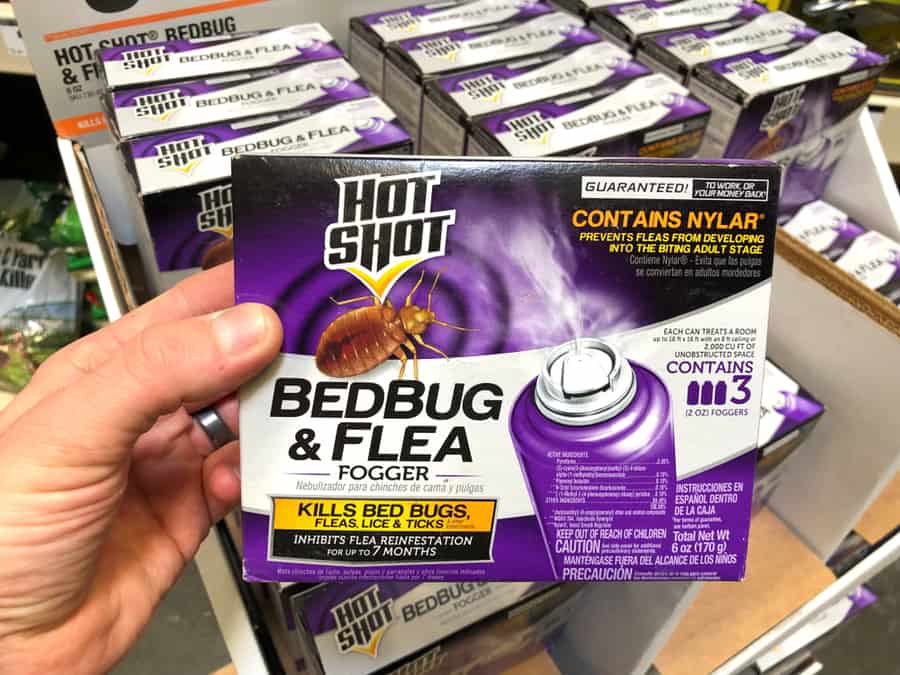
A household flea spray is the best way to prevent flea infestations.
Choosing a bouquet designed specifically for home use is important, as many outdoor products may be harmful when used indoors.
You must read the instructions carefully and follow them when using the spray. This will ensure your home is properly protected from fleas while avoiding potential health hazards.
Be sure to cover all furniture, carpets, and upholstery thoroughly when applying the insecticide so that no area of your house is left untreated.
Additionally, remember to treat pet bedding or other places where animals regularly spend time.
How To Prevent Fleas From Spreading
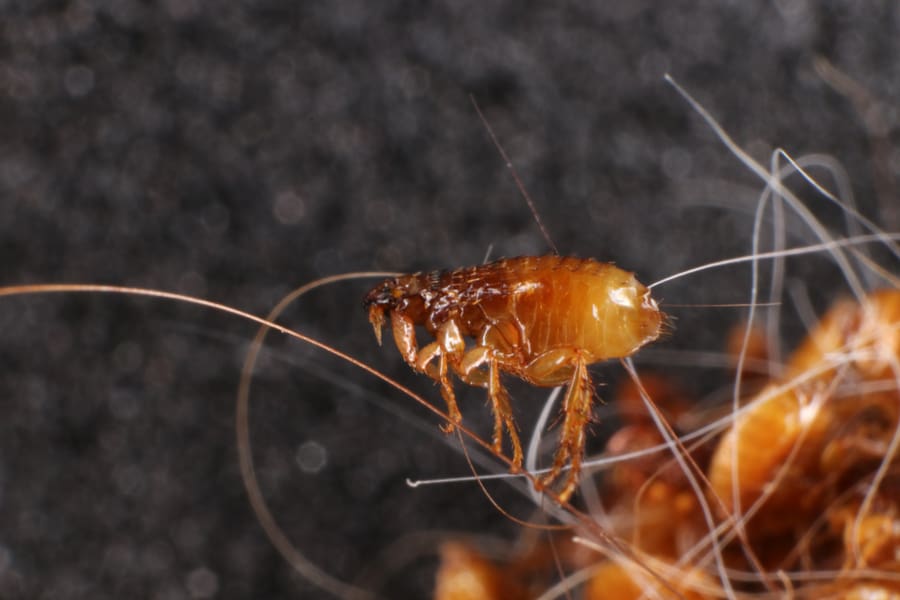
Fleas can be a nuisance and spread quickly if not appropriately managed.
Thus it’s necessary to take steps to prevent them from spreading further.
Below are some strategies to prevent fleas from spreading:
1. Cleaning Routine

A good cleaning routine is essential to keeping fleas out of your home. Vacuum carpets, rugs, cushions on chairs and sofas, and other soft furnishings to remove debris and dirt that can attract pests.
To ensure your home is as spotless as possible, it’s important to empty the vacuum bag or canister of all debris regularly. This ensures that all dust, dirt, hair, and other particles don’t accumulate in your carpets or furniture.
Additionally, take time to sweep up any crumbs or other food particles that may have fallen on the floor while eating; these could attract more fleas if left unchecked.
2. Action per Treatment

The key to eliminating fleas is using a dual-action pet treatment that kills adult fleas and targets another lifecycle stage; three popular treatments include Advantage, Advocate, and Sere.
To tell if the fleas are dying, you need to observe your pet’s skin for signs of improvement or relief from itching or scratching.
If you’re using advantage, look for dead adult fleas on their skin or fur within 12 hours of application.
The advocate should be effective after 24-48 hours, with no live fleas visible on your pet’s body.
With sere, it may take up to four weeks to see a noticeable difference in the level of flea activity on your pet.
3. Inspect Holes or Screens
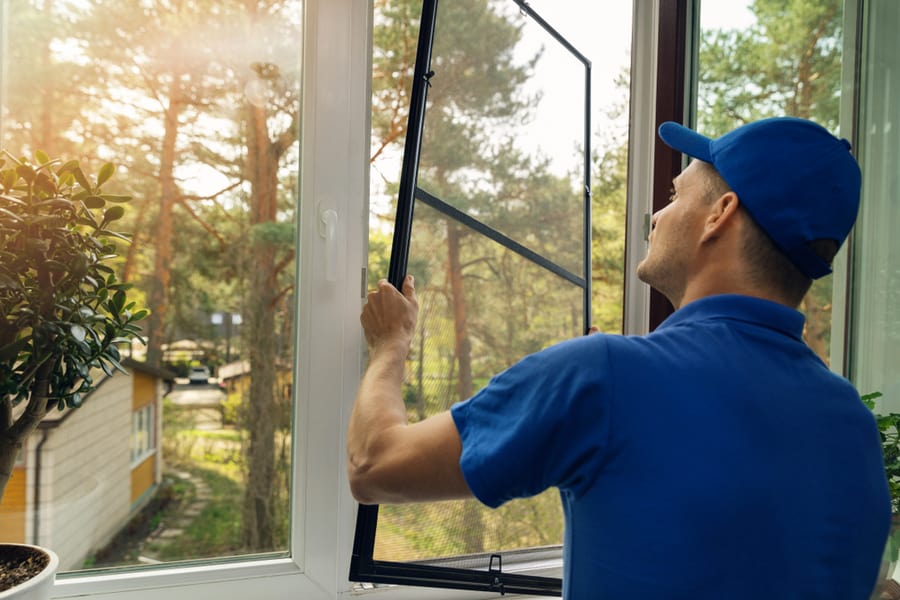
To ensure these pests don’t become a bigger problem, it’s essential to inspect your home for potential entry points they may use to get inside.
This includes looking for holes in walls or screens with tears.
Conclusion
It is important to be aware of the signs that fleas are dying.
This is important to assess the effectiveness of your flea treatment and ensure that your family and pets remain safe.
The action of fleas in your pet can be gauged by various factors, which include itching, hair loss, bumps, and lethargy.
If your pet shows no sign of recovery, it’s important to consult a vet.
Frequently Asked Questions
How Long Do Fleas Take To Die Off?
Adult fleas live for approximately 2-3 months on average but can survive up to one year or longer, depending on temperature and humidity levels.
The flea’s life cycle consists of four stages – egg, larva, pupa, and adult – each lasting from several days to several weeks, depending on environmental conditions.
How Can I Tell if the Fleas Are Dying?
Identifying dying fleas is an essential step in effective flea control. It is relatively easy to detect.
First, check for physical evidence, and If you see fleas and they are moving slowly enough to catch success, they are busy dying!



